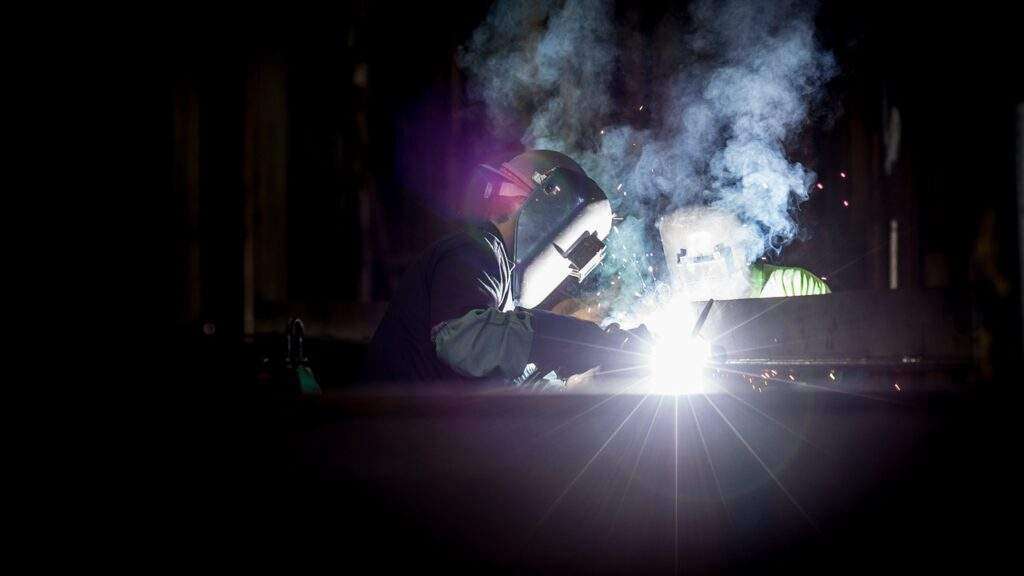
As manufacturing techniques evolve, the demand for precision and efficiency remains constant. Technology plays a pivotal role in shaping the future of various industries. One such technological advancement making waves in the welding industry is the integration of cobots or collaborative robots. These sophisticated machines are redefining the way welding tasks are performed, and this article will explore how cobot welding is becoming the cornerstone of achieving precision and efficiency in modern manufacturing.
The Rise of Collaborative Robots
They have recently gained popularity in various manufacturing sectors, and welding is no exception. These collaborative robots are made to work alongside human welders, enhancing productivity while maintaining safety standards. Their agility and precision have made them indispensable tools in the welding industry. They are equipped with advanced sensors and vision systems that allow them to identify workpieces and adapt to changing conditions accurately. This adaptability ensures that welding tasks are performed consistently and precisely, reducing errors and the need for rework.
Increasing The Productivity Quotient
One of its primary benefits is a significant boost in productivity. These robots can work tirelessly, 24/7, without needing breaks or rest. This non-stop operation leads to faster project completion, helping manufacturers meet tight deadlines and increase their output. Moreover, collaborative robots can easily handle repetitive and monotonous welding tasks, freeing human welders to focus on more complex and creative sections of their work. This not only improves productivity but also enhances job satisfaction among workers.
Precision and Consistency
Precision is crucial in welding, as even a small deviation can compromise a weld’s quality and structural integrity. They excel in maintaining precision thanks to their advanced programming and real-time monitoring capabilities. They can consistently perform welds with micron-level accuracy, reducing the likelihood of defects and rework. Additionally, collaborative robots can be programmed to follow specific welding patterns and parameters with absolute consistency. This ensures that every weld is of the same high quality, regardless of the operator, improving product reliability.
Enhancing Safety Parameters
Safety is a top priority in the welding industry, where workers are exposed to hazards such as high temperatures, fumes, and arc flashes. They are designed to work collaboratively with humans, making them an excellent addition to welding operations.These robots are equipped with proper safety features such as sensors and emergency stop buttons, which ensure the immediate halt of operations in case of any unexpected events or human intervention. This helps reduce the chances of accidents and injuries, creating a safer working environment for welders.
Boosting Cost Efficiency
While the initial investment in cobot welding technology may seem substantial, the long-term cost savings make it a wise choice for manufacturers. Collaborative robots can work continuously without breaks, reducing labour costs associated with overtime and additional workforce. Furthermore, the precision and consistency of these welds lead to fewer defects and less material waste. This translates into savings on rework, scrap materials, and the overall cost of production. Over time, the return on investment for the technology becomes evident through increased profitability.
Conclusion
In conclusion, cobot welding has emerged as the key to achieving precision and efficiency in modern manufacturing. These collaborative robots are revolutionising the welding industry by increasing productivity, maintaining precision and consistency, enhancing safety, and improving cost efficiency. As industries continue to evolve and demand higher quality and productivity standards, this technology will play an increasingly vital role. It is not just a tool for automation but a partner that complements the skills and expertise of human welders. Together, they form a dynamic team that delivers exceptional results in welding and manufacturing. Embracing it is not just an investment in technology; it’s an investment in the future of manufacturing.
Author Name: Alison Lurie